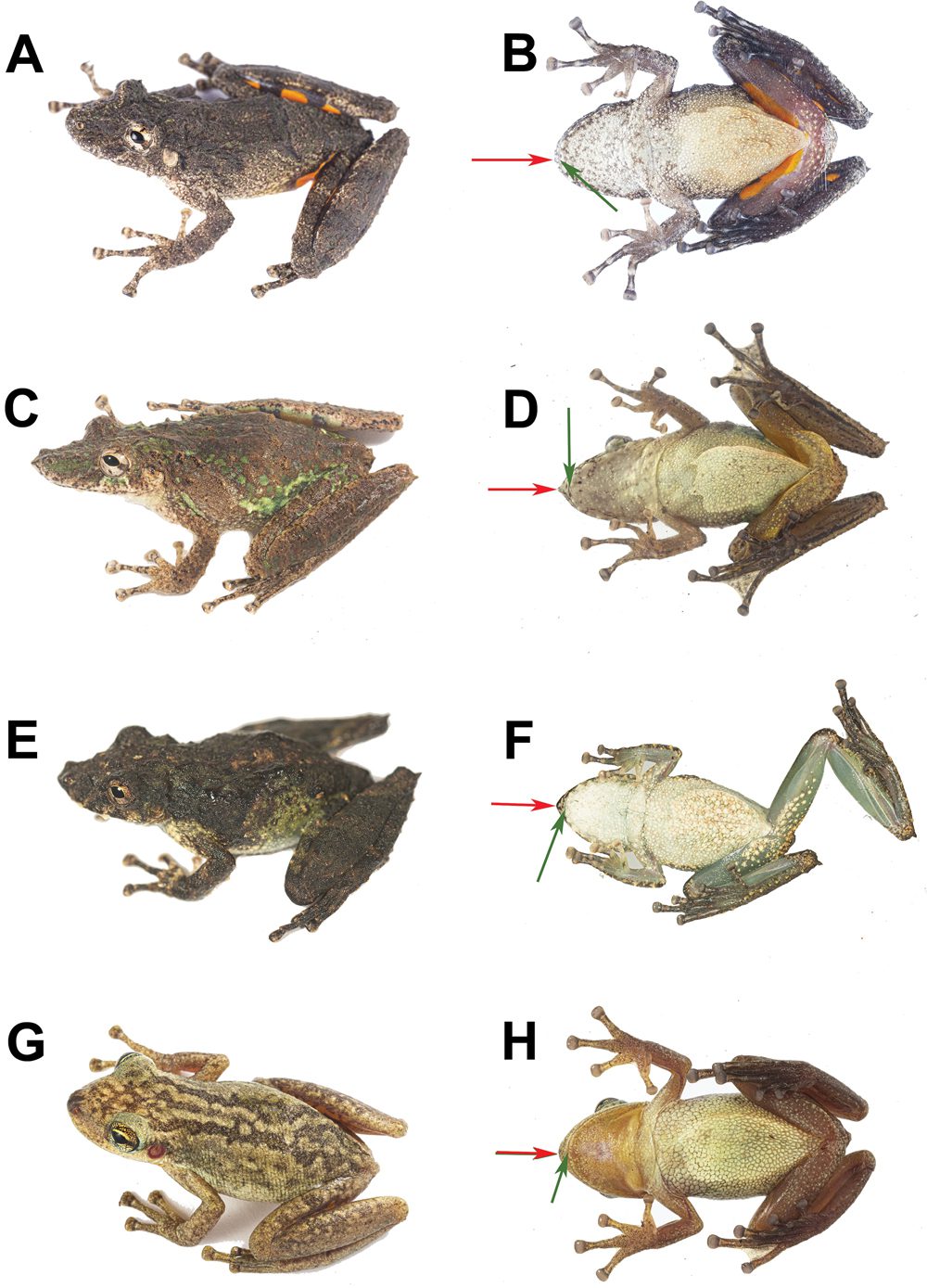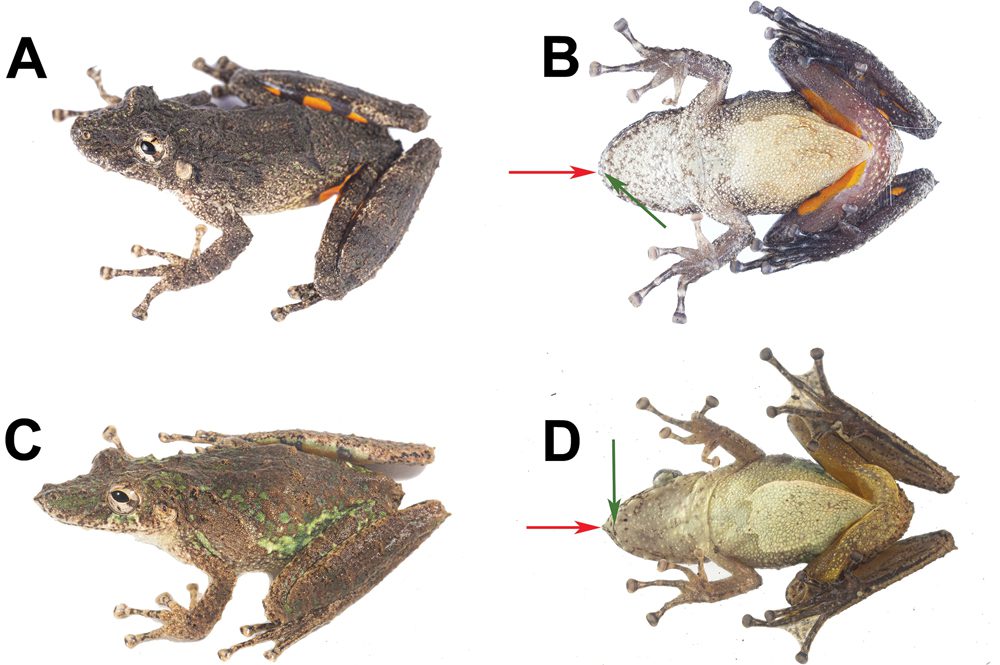The frog, Scinax pyroinguinis sp. nov. was described from two males that were found in the Amazon rainforest.
Researchers have discovered a new species of treefrog that was found in the middle Ucayli River in Peru. The frog, Scinax pyroinguinis sp. nov. was described from two males that were found in the Amazon rainforest and is only known from the type locality that is threatened by habitat loss caused by wildfire, the researchers said.
Surveys were conducted in the fall of 2022 of a remnant forest that sat in the middle of a burnt area and pastures in the Ucayali River Basin, Amazon Lowlands. The results of the survey revealed two Scinax frog specimens that closely resembled that of frogs of the Scinax rostratus group. The researchers conducted a genetic and morphological analysis of the two frogs and concluded that the frogs are new to science.

Dorsal (left column) and ventral (right column) coloration in life of some species of the Scinax rostratus group (A–F) vs a representative of the Scinax ruber clade not included in the S. rostratus group (G–H). A, B. Scinax pyroinguinis sp. nov.; C, D. Scinax garbei (SINCHI 00712), E–F) Scinax pedromedinae (CORBIDI 18210); G, H. Scinax ruber (SINCHI 00416). Arrows show the differences between the edge of the maxilla and the tip of the snout. Green arrows pointed on the maxillary edge; Red arrows pointed on the tip of the snout.
The researchers compared the 16S rRNA mitochondrial gene to that of 16 distinct species of Scianx frogs that are most similar to the specimens as well as the outgroup species Scarthyla ostinodactyla and Sphaenorhynchus lacteus, and the new sequences of S. pyroinguinis sp. nov. Based on the comparison data, the researchers concluded the new species as a sister lineage to the clades that include S. garbei and S. rostratus.
New Treefrog Species Discovered Near Brazil’s Abandoned Trans-Amazonian Highway
Keeping and Breeding Red-eyed Treefrogs
“Despite having collected only two individuals, our field sampling and comparisons with populations of sympatric species suggest that Scinax pyroinguinis is an uncommon species in the area,the researchers wrote in their study paper. “Indeed, we have obtained these two individuals after having completed 108 person-days of herpetological survey between 2021–2022.”
“Also, the patch of forest where S. pyroinguinis lives is under pressure from wildfires caused by farmers who try to expand their pastures or clean the ground for agriculture. These fires occur mostly in the dry season and are illegal in Peruvian territory. However, environmental policies from the government have been largely ineffective and have not prevented the loss of forest territories in the Amazon.”
The researchers are Germán Chávez of the Instituto Peruano de Herpetología, Lima, Peru Centro de Ornitología y Biodiversidad, Lima, Peru; Wilmar Aznaran, Centro de Ornitología y Biodiversidad, Lima, Peru, Universidad Nacional; Pedro Ruiz Gallo Lambayeque, Peru; Luis A. García-Ayachi, Instituto Peruano de Herpetología, Lima, Peru; and Alessandro Catenazzi of the Instituto Peruano de Herpetología, Lima, Peru, Centro de Ornitología y Biodiversidad, Lima, Peru, Florida International University, Miami, USA.
The complete paper, “Rising from the ashes: A new treefrog (Anura, Hylidae, Scinax) from a wildfire-threatened area in the Amazon lowlands of central Peru” can be read in the Evolutionary Systematics journal.
Algo mas sobre la rana de Ingles de Fuego (Scinax pyroinguinis), una especie que descubrimos junto a @VigoAznara77451 @GarciaAyachi y @acatenazzi . El articulo esta publicado en @EvolSystematics pero pueden encontrar el enlace en las cuentas de @CORBIDIteam y el @IPHperu https://t.co/V7FZNTCEFw
— Germán Chávez (@GermnChvez4) May 17, 2023


